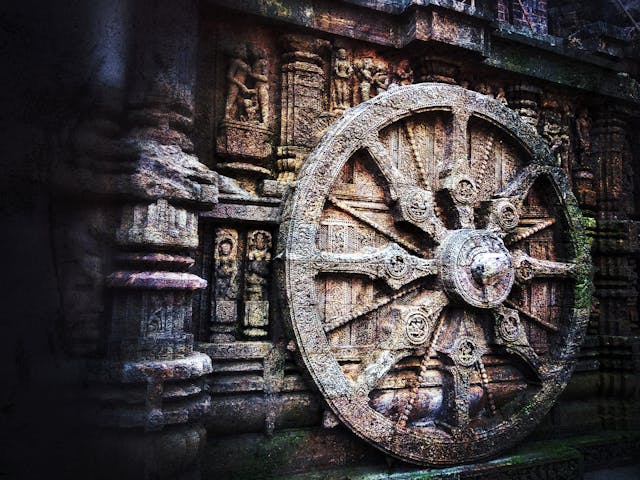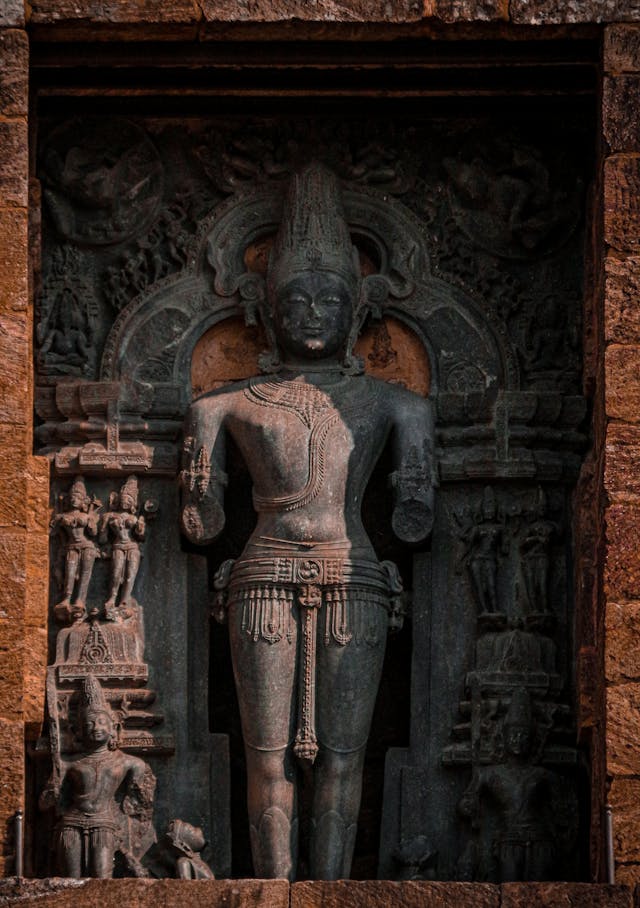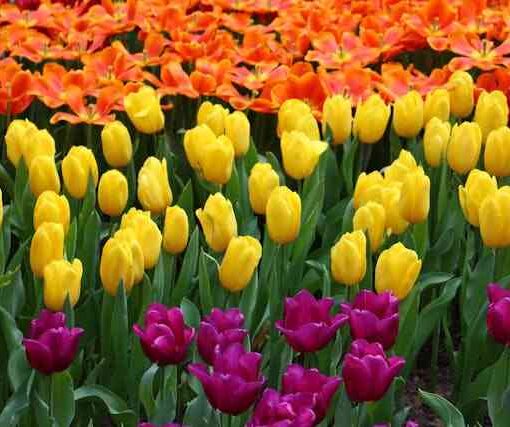For over a millennium, master artisans in Odisha have transformed cold stone into living legends — where every carving tells a story of gods, kings, and celestial beings. Join me as we journey through the rich history, unique styles, and modern-day global recognition of Odisha’s stone carving tradition — a timeless legacy etched in stone.
Where Stone Becomes Story
Imagine standing before a towering temple, your fingers tracing the delicate curves of a stone sculpture that seems to breathe life. In Odisha, the ancient art of stone carving is not just craftsmanship — it’s a living tradition where every chisel mark tells stories of gods, legends, and the vibrant culture of India’s eastern shores. Known locally as Kalinga Shilpa or Pathara Shilpa, Odisha’s stone carving has mesmerized visitors and scholars for over a millennium, marrying spirituality and artistry in a way few other traditions can.

The Roots: Origins of Odisha Stone Carving
Odisha’s stone carving tradition dates back to at least the 7th century CE, deeply intertwined with the rise of the Kalinga kingdom, which shaped much of eastern India’s cultural and architectural landscape. The earliest examples appear on ancient temples like the Lingaraj Temple in Bhubaneswar, a masterpiece of the 11th century, where intricate stone sculptures depict deities, dancers, and mythological narratives.
The artisans, known as Shilpis, have passed their skills down through generations, preserving techniques and designs that make Odisha’s carvings uniquely distinguishable. The choice of stone — typically sandstone, chlorite, laterite, or granite — is deliberate. Each material’s texture and durability influence the final sculpture’s appearance and longevity.
What Makes Odisha’s Stone Carving Stand Out?
At the heart of Odisha’s stone carving is the Kalinga style, renowned for its elaborate temple spires (called shikharas) and rich iconography. What makes it special?
- Narrative Richness: Sculptures tell ancient stories from Hindu epics like the Ramayana and Mahabharata, capturing gods, goddesses, celestial dancers, and everyday life.
- Sensory Details: Look closely and you’ll see rhythmic patterns of lotus petals, swirling vines, and geometric shapes — all painstakingly chiseled by hand.
- Living Stone: The artists use deep relief techniques to create three-dimensional figures that play with light and shadow, giving the illusion of movement and life.
- Traditional Techniques: From rough chiseling to fine polishing, artisans rely on age-old tools and skills, blending patience and precision.
Odisha Stone Carving on the World Stage
The Sun Temple at Konark, a UNESCO World Heritage Site, stands as a global symbol of Odisha’s artistic heritage. Its giant stone wheels and intricately carved walls draw visitors and scholars alike, sparking admiration for the artisans who crafted such grandeur without modern machinery.
Beyond Konark, Odisha’s sculptures grace prominent museums worldwide, including the British Museum in London and the Metropolitan Museum of Art in New York. These collections highlight the international appreciation for Kalinga art.
At home, artisans continue to showcase their craft at major fairs such as the Surajkund Mela, the India International Trade Fair in New Delhi, and the Rajasthan International Folk Festival. These vibrant gatherings not only celebrate Odisha’s heritage but also provide vital opportunities for craftsmen to connect with buyers and enthusiasts.

Challenges and Preservation: Keeping the Legacy Alive
Despite its grandeur, Odisha’s stone carving faces modern hurdles. Younger generations often migrate toward urban jobs, reducing the pool of skilled artisans. Additionally, sourcing quality stone has become unpredictable.
Thankfully, government bodies and NGOs are stepping up — offering training programs, financial support, and exhibitions to promote and sustain this heritage craft. Tourism and global interest play a crucial role, fueling demand and encouraging artisans to keep this tradition alive.
How You Can Experience Odisha’s Stone Carving Today
Visiting Odisha’s iconic temples like Konark and Lingaraj offers an immersive experience into this stone-carving marvel. For deeper insight, the Odisha Crafts Museum (Kala Bhoomi) in Bhubaneswar is a treasure trove, showcasing exquisite carvings and the history behind the craft.
🧱 Sudarshan Sahoo: The Global Face of Traditional Stone Carving
A true guardian of Odisha’s stone carving heritage, Sudarshan Sahoo has dedicated his life to preserving and promoting Kalinga Shilpa on the world stage. Born in Puri in 1939, Sahoo trained under temple sculptors before becoming a celebrated artist in his own right. His sculptures, rooted in classical Indian themes and mythology, are now displayed in galleries and private collections across Japan, Germany, the UK, and the USA.
In recognition of his immense contribution, he received the Padma Vibhushan in 2021 — India’s second-highest civilian honor — and the Shilp Guru Award, the country’s top award for master artisans. He also founded the Sudarshan Crafts Museum and Art & Crafts Village in Bhubaneswar, which continue to train future generations and welcome international art lovers.
This is not the end of it, there are many others who have been dedicated to preserve and continue this timeless art.
Interesting Videos
Conclusion: More Than Stone — A Living Legacy
Odisha’s stone carving is not just an art form frozen in time; it is a vibrant, living tradition that connects us to India’s spiritual and cultural heart. By appreciating and supporting this craft — whether through travel, purchase, or sharing knowledge — we help keep an ancient story alive for future generations.
So, whether you’re an art lover, traveler, or curious soul, let Odisha’s stone sculptures open a window to India’s rich heritage — one chisel stroke at a time.
Check out our other blogs on Famous Indian Crafts category, you will definitely like it.


